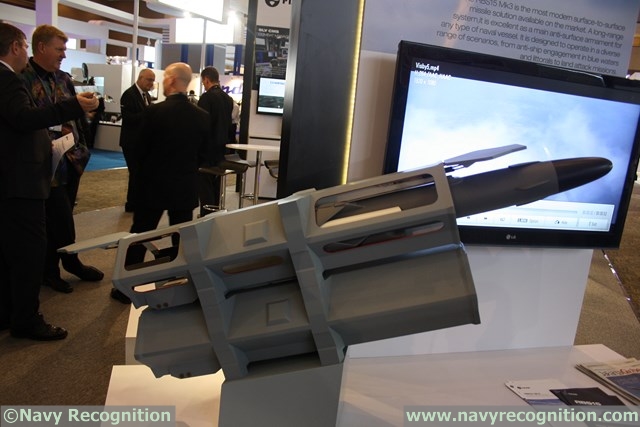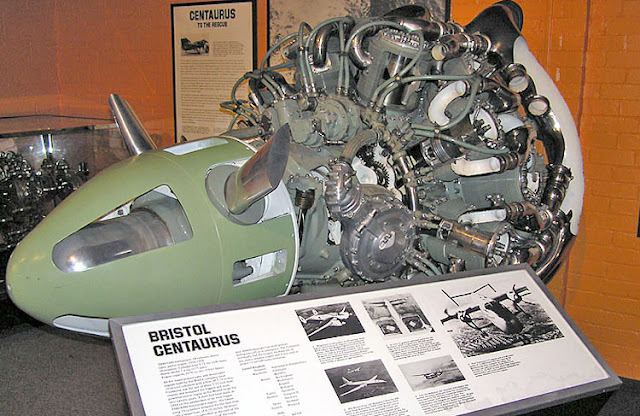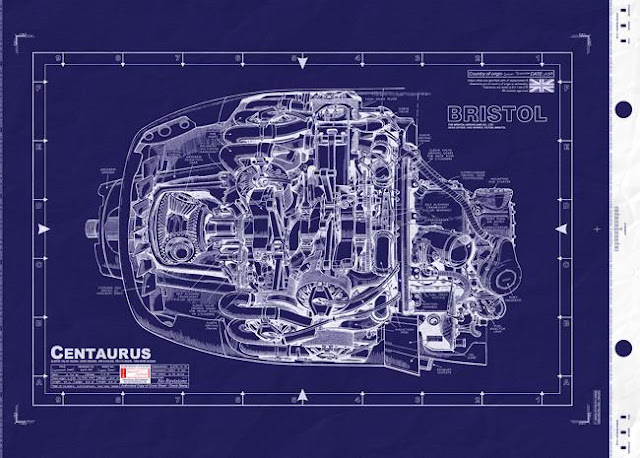La società tedesca Diehl Defense, partner della Saab nel programma missilistico RBS15 GUNGNIR, ha ordinato alla compagnia svedese un numero imprecisato di missili per conto della Marina tedesca. L'ordine è valutato a ca. 164 milioni di euro per la consegna negli anni 2022-2026.
L'accordo quadro tra le due società prevede la possibilità di ulteriori ordini entro la fine del 2024.
I missili ed i lanciatori coperti da quest'ordine sono destinati alle corvette della Bundesmarine classe BRAUNSCHWEIG e saranno forniti insieme alle apparecchiature ed ai servizi logistici.
L'RBS15 offre agli operatori una capacità anti-nave a lungo raggio, per tutte le condizioni atmosferiche, ed è progettato per superare le sfide del moderno spazio di battaglia navale. Costruito per il dispiegamento su più piattaforme, attualmente serve con le forze armate di diverse nazioni.
L'aggiudicazione del nuovo contratto è un segno di fiducia da parte della Marina tedesca verso Diehl Defense e la sua cooperazione strategica con la svedese Saab nel campo dei moderni sistemi d’arma.
La versione di lancio di superficie di RBS15 Gungnir utilizza il nuovissimo missile di superficie RBS15 Mk4. Ciò fornisce una maggiore portata, una maggiore penetrazione della difesa e protezione elettronica, nonché un cercatore di bersagli più avanzato, permettendogli di ingaggiare qualsiasi bersaglio, in tutte le condizioni.
Il missile RBS15 Mk4 Surface è utilizzato sia nel sistema marittimo che in quello terrestre di RBS15 Gungnir. È progettato per fornire elementi comuni attraverso una facile integrazione su piattaforme terrestri e marittime di quasi tutte le dimensioni. Il sistema è completamente retrocompatibile, quindi un investimento in Mk3 oggi apre un percorso agevole per la transizione a Gungnir domani.
“Con RBS15 Gungnir continuiamo a costruire sul successo e la conoscenza che abbiamo acquisito dalle precedenti generazioni di RBS15. La versione per il lancio di superficie è un sistema missilistico altamente flessibile che può essere integrato con le reti di comando esistenti e su un'ampia gamma di navi disponibili oggi sul mercato ", afferma Görgen Johansson, Vicepresidente senior e capo dell'area di business Saab Dynamics.
Il programma di sviluppo e produzione, valutato a 3,7 BSEK, è stato stipulato a marzo 2017 con la Swedish Defence Material Administration (FMV). Questa nuova generazione del sistema RBS15 è denominata RBS15 Gungnir di Saab e viene ora offerta al mercato come soluzione completa di sistemi missilistici per piattaforme aeree, marittime e terrestri.
La famiglia di missili RBS15 è prodotta congiuntamente da Saab e Diehl Defense GmbH & Co. KG e serve con varie marine, batterie costiere e forze aeree provenienti da Svezia, Finlandia, Germania, Polonia, Croazia, Tailandia e un paese segreto.
L'RBS-15 è un missile svedese a medio raggio antinave, per uso multipiattaforma, come nel caso dei cacciabombardieri Saab 37 Viggen e Saab JAS-39 Gripen, motocannoniere Spica e sottomarini. Tra le caratteristiche, guida finale radar attiva, attacco radente alla superficie del mare per evitare l'avvistamento e l'intercettazione, e per colpire la linea di galleggiamento. RBS-15 significa RoBotSystem 15, ed è una tipica designazione dei missili svedesi. Dal 2011 la versione RBS15 Mk3 viene prodotta dalla Saab assieme alla tedesca Diehl BGT Defence.
Progettazione
La tradizionale neutralità svedese non ha impedito mai a questa nazione di sviluppare armamenti avanzati, che sono stati utilizzati primariamente per la difesa nazionale. Tra questi alcuni tipi di missili, il cui più moderno tipo è l'RBS-15.
La sua progettazione iniziò con un contratto passato alla Saab-Bofors per un nuovo missile antinave per le navi e i cacciabombardieri svedesi. La versione aviolanciabile RBS-15F venne sviluppata a partire da 37 mesi dopo, agosto 1982. Infine, venne ideata la versione per sommergibili, da trasportare dietro la vela di questi piccoli battelli, in servizio in Svezia.
Tecnica
Il suo progetto è caratterizzato dall'aspetto tozzo, con 2 serie di ali cruciformi, le prime a prua per il controllo, quelle posteriori sono più grandi con altre superfici di controllo.
L'arma è costituita in 3 sezioni. La prima comprende la sezione radar, che contiene il radar PEAB Kubrand in banda J, con caratteristiche molto avanzate per l'epoca, come la processazione digitale, ad agilità di frequenza. La sezione centrale ha una testata della FFV con spoletta ad impatto ma anche di prossimità. La terza ha un motore di sostentamento, che non è svedese, ma il francese Microturbo TRI-60. Vi sono anche 2 impulsori, motori a razzo con propellente solido, che sono privi di impennaggi.
Il missile viene lanciato con le alette ripiegate, dal contenitore di lancio in fibra di vetro o metallo. Gli impulsori bruciano per 3 secondi, poi si sganciano e lasciano il missile in volo con il turbogetto. La traiettoria di volo viene controllata da un radar altimetrico e da un computer.
Il missile viene lanciato con il volo a bassa o alta quota in crociera, poi scende radente in ogni caso per l'attacco finale, e acquisisce il bersaglio con la sua attrezzatura di tiro, ma se non lo trova dopo un certo tempo si autodistrugge.
Servizio
L'RBS-15 è un'arma potente, con una buona gittata grazie al motore turbogetto, e ha ricevuto alcune commesse estere, specialmente dalla marina finlandese.
Esso è entrato in servizio a partire dal 1985, soprattutto con i Saab 37 Viggen, ma anche e soprattutto, più di recente, con i caccia multiruolo Gripen. Le navi d'attacco e corvette hanno 4-8 missili pronti al lancio nei loro contenitori rettangolari caratteristici. La versione antinave da difesa costiera è pure stata adottata per le truppe specializzate delle forze armate svedesi.
Sono state realizzate almeno 3 versioni di questa arma, l'ultima delle quali, l'Mk 3, è accreditata di 200km di gittata, congrua con la massa del missile e la presenza del turbogetto (nel senso che esso è più pesante di altri tipi come gli Harpoon, con la differenza verosimilmente data dal carburante). Nei fatti, è assai simile all'OTOMAT. Quest'ultimo modello di missile, però, è lanciabile solo da navi, almeno in termini di qualifiche finora ottenute. La presenza del GPS rende possibile l'uso contro bersagli a terra, ma non pare che esista modo di aggiornare, tramite datalink, la rotta di volo.
La versione Mk 4 è stata prevista per le nuove corvette ordinate dalla Germania del tipo K-130.
L'unico progetto problematico è risultato quello del missile in versione sub-lanciata. Questo è stato sperimentato a lungo, ma le distanze d'impiego pratiche sono state ridotte dalla scarsa capacità di scoperta dei sommergibili sulle navi a distanze maggiori di pochi km. Il sommergibile doveva essere aiutato con dati passati esternamente, ma questo non aiutava a rendere questo tipo di unità, invisibile per definizione, efficiente.
La scelta è stata quindi quella di affidarsi solo ai siluri, che nel caso dei Tp 61 hanno una portata di 20km a 45nodi, quindi più che sufficiente per porre una grave minaccia alle navi di superficie scoperte dai piccoli sottomarini svedesi. Del resto, anche gli SSN americani hanno avuto un successo molto limitato per i pur numerosi missili Harpoon prodotti per l'impiego da sottomarini, l'UGM-84.
Utilizzatori:
- Germania: La Deutsche Marine usa la versione Mk3 sulle Braunschweig, dal 2011 in prova. Dal 2015 in servizio su 5 corvette.
- Finlandia: La marina finlandese usa la versione RBS15SF (Mk2, designazione MTO 85) e la RBS15SF-3 (Mk3, designazione MTO85M), sulle corvette Rauma e Hamina, così come sul veicolo Sisu.
- Croazia: La marina croata usa la versione RBS15M su corvette e su veicoli Tatra.
- Polonia: La marina polacca usa l versione Mk3 sulle Orkan.
- Svezia: La marina svedese li usa sulle Stockholm, Göteborg e sulle Visby. Per la difesa di costa sono su veicoli Volvo. Sul Saab JAS 39 Gripen può avere impiego aria-terra.
ENGLISH
The RBS-15 (Robotsystem 15) is a long-range fire-and-forget surface-to-surface and air-to-surface, anti-ship missile. The later version Mk. III has the ability to attack land targets as well. The missile was developed by the Swedish company Saab Bofors Dynamics.
History
The Swedish Navy earlier made the RB 08 anti-ship missiles with the Halland-class destroyers in the early 1960s. The main effect of Sweden's defence resolution of 1958 for the Swedish navy was restructuring into a lighter force consisting of fast attack craft (FAC) vessels and a halt to destroyer procurement. This posed a problem as the existing RB 08 missile required launch rails and a missile magazine in the destroyers, taking up space that was not there on smaller ships. Adding to the problems, each missile had to be individually prepared for launch and only two missiles could be on the launch rails at the same time. In comparison, the P-15 Termit (NATO codename Styx) missile used by the Soviet Union from the late 1950s (which was the expected adversary of RBS-15) stored the missiles in individual containers on deck which left the missiles immediately available for launch. Tests were carried out on Plejad class FACs with a single bow-mounted RB 08 in the late 1960s, but they came to nothing.
Saab's next attempt at anti-ship missiles to equip the Norrköping class FACs of the Swedish navy was in 1978 under the project name "RB 04 Turbo", a development of the air force RB 04E missile with a turbofan engine, changed wing configuration and start rockets to take off from land. The initial proposal was rejected as inferior to the Harpoon missile. The project, under the leadership of Hans Ahlinder, then worked out a proposal for a missile with greater capabilities and superior performance to the Harpoon. To indicate that it was a new weapon the project name was changed from "RB 04 Turbo" to "RBS-15".
The first weapon contract was signed in 1979; at the last minute the Swedish government did not buy the Harpoon anti-ship missile, opting for an indigenous design. The first missiles were delivered to the Navy in June 1984, and the ship version RBS-15 Mk. I was introduced.
The Swedish Navy ordered the missile in 1984 to develop a coastal defense version of the RBS-15F. The missile was taken into Swedish Navy service as the Rb 15 by the Swedish Navy and became operational in 1985. The Swedish Air Force received their missiles a couple of years later. The Mk. I was produced from 1985 to 1990.
Work on a further developed version, the RBS-15 Mk. II, began in the early 1980s. But it took until 1994 to get a development contract for the upgraded anti-ship missile. The Mk. II has the same range (70+ km), but the mid-course and terminal guidance system, as well as the radar and IR signature were upgraded. The Mk. II has been produced since 1998.
The development of the RBS-15 Mk. III began in the mid-1990s. It is produced by Saab in co-operation with Diehl BGT Defence of Germany.[4] Emphasis was put on increased range (due to larger fuel capacity and new fuel the range has been increased to some 200 km), improved accuracy (integrated GPS) and selectable priority targeting, which improved the weapon system's flexibility. The Mk. III was selected for the German Navy’s Braunschweig-class corvettes. Finnish truck maker Sisu produces missile launch trucks for RBS-15. The Mk. III has been in production since 2004.
Development phase
The missile was developed from the RB 04 missile that was used by the Swedish air force. The front of the missile was retained, including the warhead, but the rear received new wings and a turbofan engine replaced the rocket previously used. The RBS-15 underwent trials on the missile FAC HMS Piteå from 1983 and became operational with the Swedish Navy in 1985. The Västergötland class submarines were to have 4 vertical missile launch tubes for RBS-15 missiles in an extended hull, canceled due to budget constraints and to not fitting the way Swedish submarines operated.
Replacement
In March 2017 Saab received an order for a new generation anti-ship missile to replace the RBS-15. The order is valued at 3.2 billion SEK and deliveries will take place between 2017–2026. The new missile will have better range, a better seeker and lower weight. It will have the ability to knock out a wide range of sea and land targets, all-weather capability and a design that allows for future upgrades.
Versions:
- RBS-15 Mk. I Powered by a French Microturbo TRI-60 engine, with a thrust of 3.73 kN (380 khp/830 lbf). Range 70+ km
- RBS-15F An Mk. I adapted for air launch. Entered service in 1989.
- RBS-15 Mk. II Range 70+ km. Designed to be launched from a number of different platforms, such as land-based launchers, aircraft, and ships.
- RBS-15SF Mk. II version for Finland. Local designation MTO 85 (Meritorjuntaohjus 1985)
- RBS-15 Mk. III Range over 200 km, with land attack capability. New warhead (increased penetration and insensitive munitions qualification) from TDW. There is only a ship launched version. Production started in 2004. New oval launch tubes instead of the old box type.
- RBS-15F ER Aircraft launched version of the Mk. III
- RBS-15SF-3 Both new Mk. IIIs and upgraded Mk. IIs, which have been upgraded to Mk. III standard. Finnish designation MTO 85M
- RB-15 Mk. III+ & RB 15 F-ER Ordered in March 2017 by Sweden. Will have better range, a better seeker and lower weight. It will have the ability to knock out a wide range of sea and land targets, all-weather capability and a design that allows for future upgrades. To be carried by Visby-class corvettes and JAS Gripen E. Will be delivered between 2017-2026 and fully operational in the mid 2020s.
- RB-15 Mk. IV Gungnir - The surface launch version of RBS15 Gungnir uses the all new RBS15 Mk4 Surface missile. This provides greater range, enhanced defence penetration and electronic protection as well as a more advanced target seeker, allowing it to engage any target, in all conditions.
- The RBS15 Mk4 Surface missile is used in both the sea system and the land system of RBS15 Gungnir. It is designed to provide commonality through easy integration on both land- and sea-based platforms of almost any size. The system is fully backwards compatible, so an investment in Mk3 today opens a smooth path to transition into Gungnir tomorrow. “With the RBS15 Gungnir we continue to build on the success and knowledge we have gained from the previous generations of RBS15. The surface launch version is a highly flexible missile system that can be integrated with existing command networks and on a wide range of the ships available on the market today”, says Görgen Johansson, Senior Vice President and head of Saab business area Dynamics. The development and production programme, valued at 3.7 BSEK, was contracted in March 2017 with the Swedish Defence Material Administration (FMV). This next generation of the RBS15 system is named RBS15 Gungnir by Saab and is now being offered to the market as a complete missile system solution for air, sea and land based platforms. The RBS15 missile family is jointly produced by Saab and Diehl Defence GmbH & Co. KG and serves with various navies, coastal batteries and air forces from Sweden, Finland, Germany, Poland, Croatia, Thailand and an undisclosed country.
(Web, Google, Wikipedia, Monch, You Tube)








































































